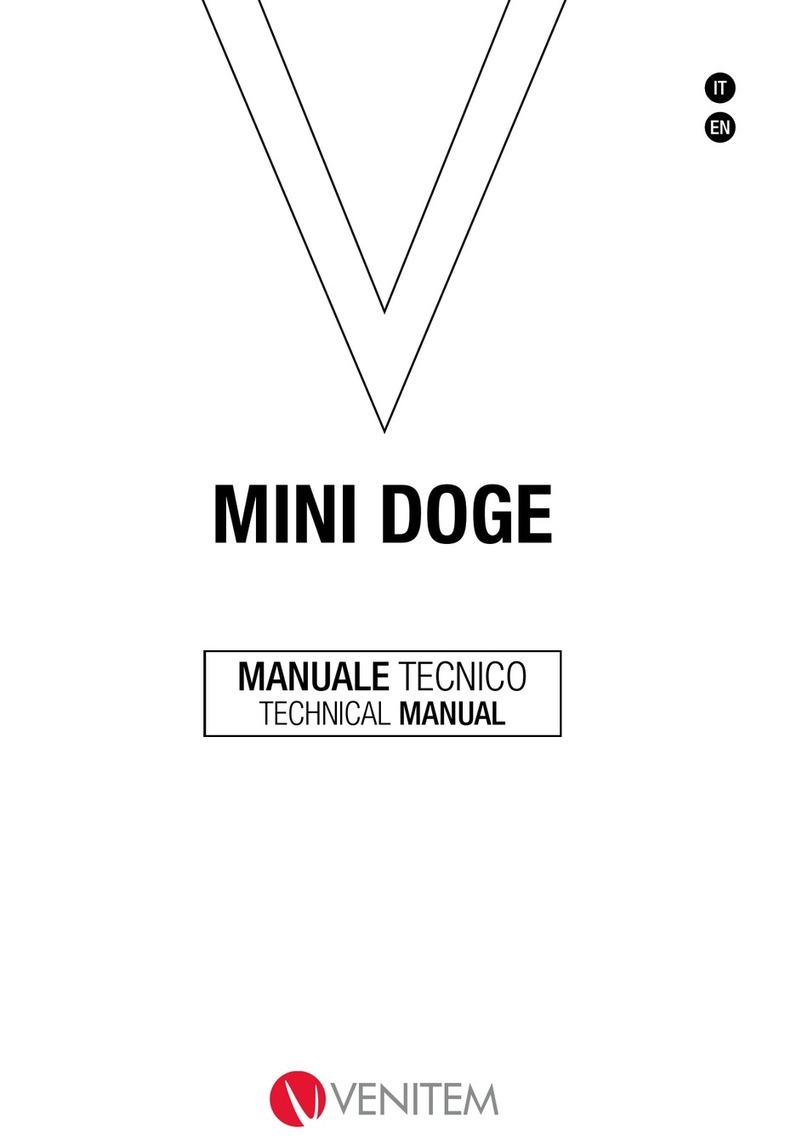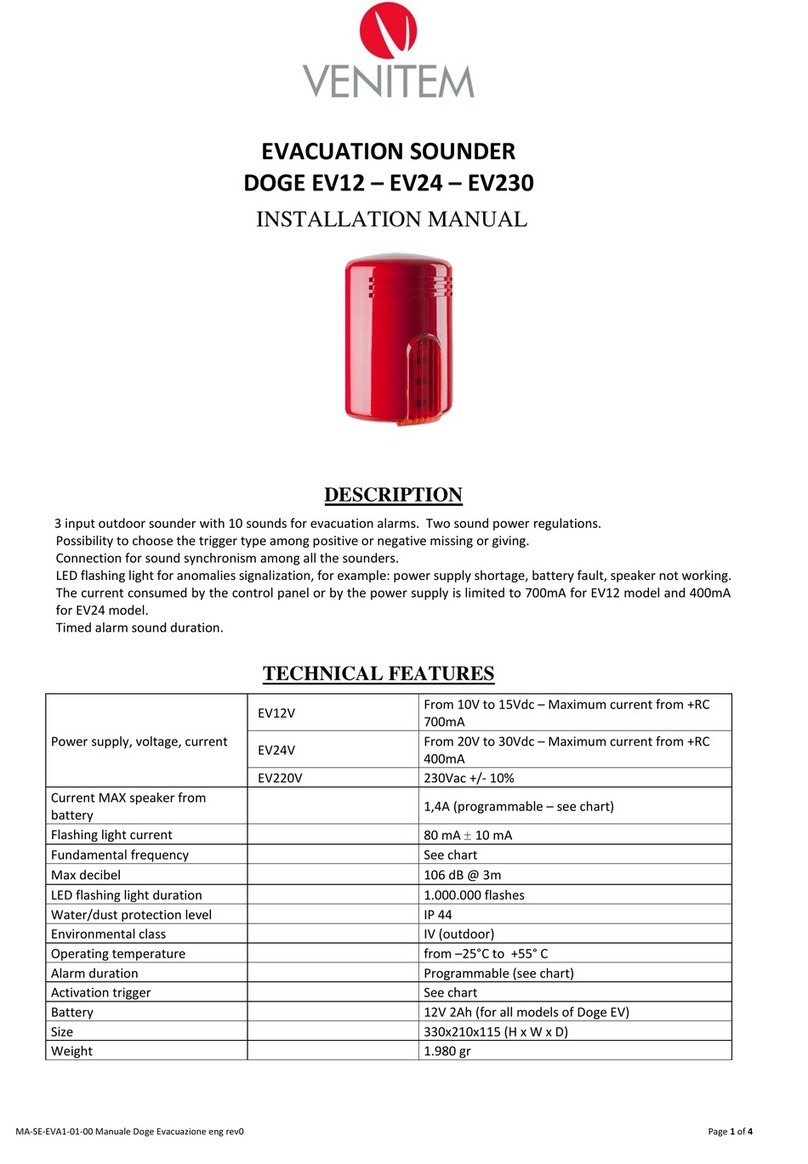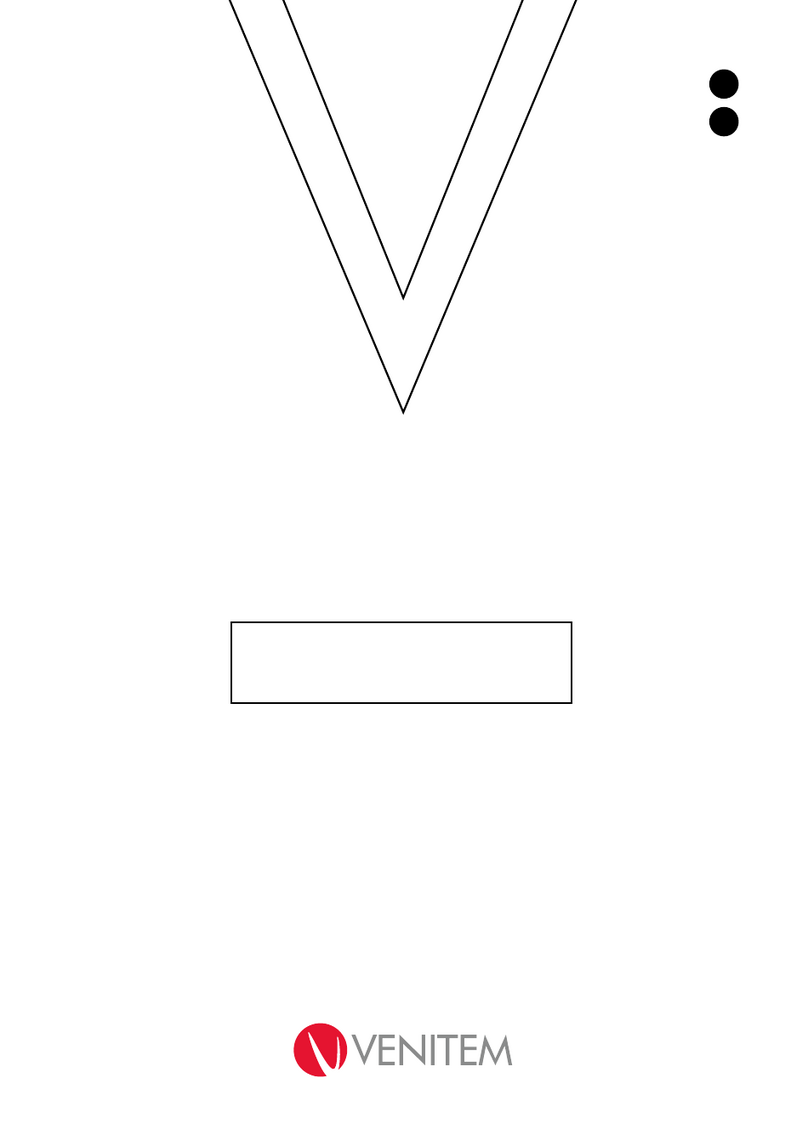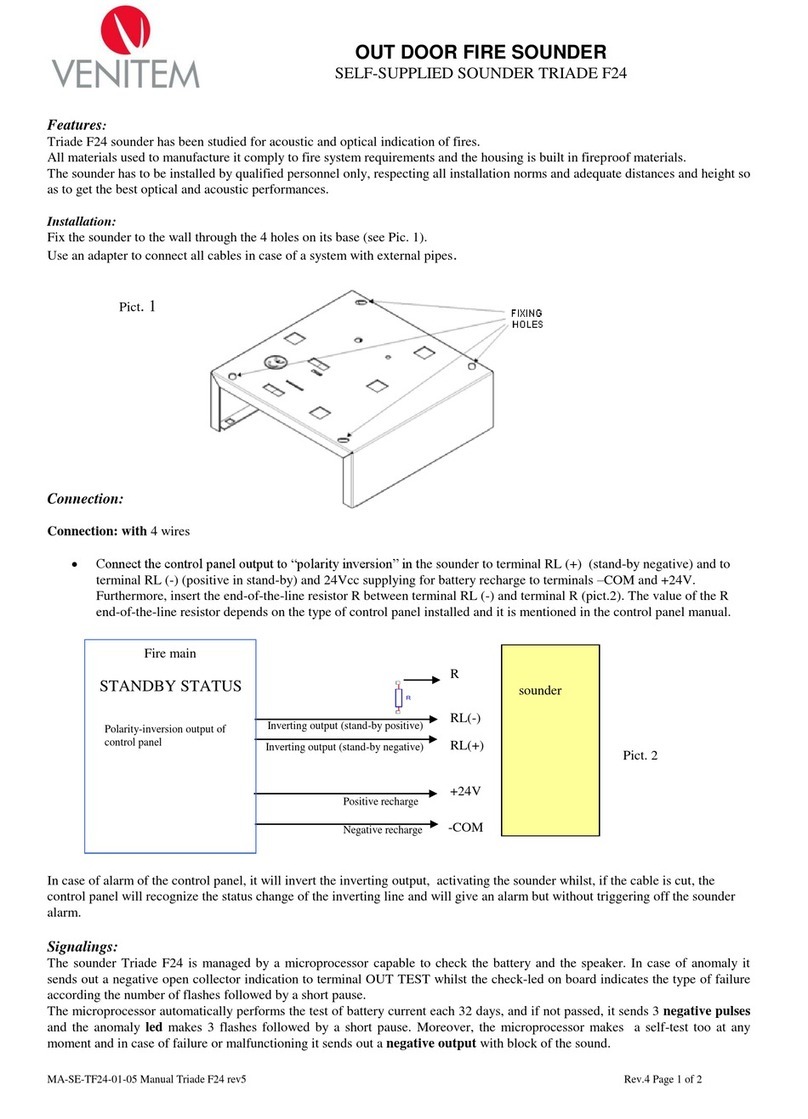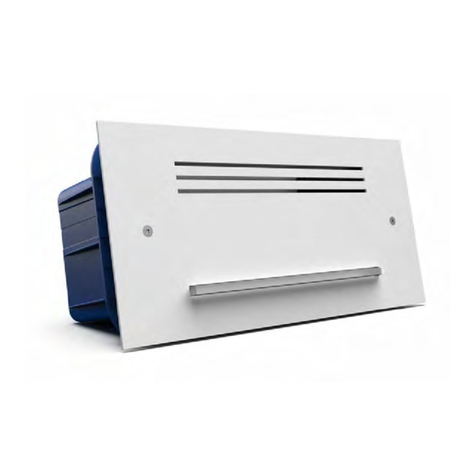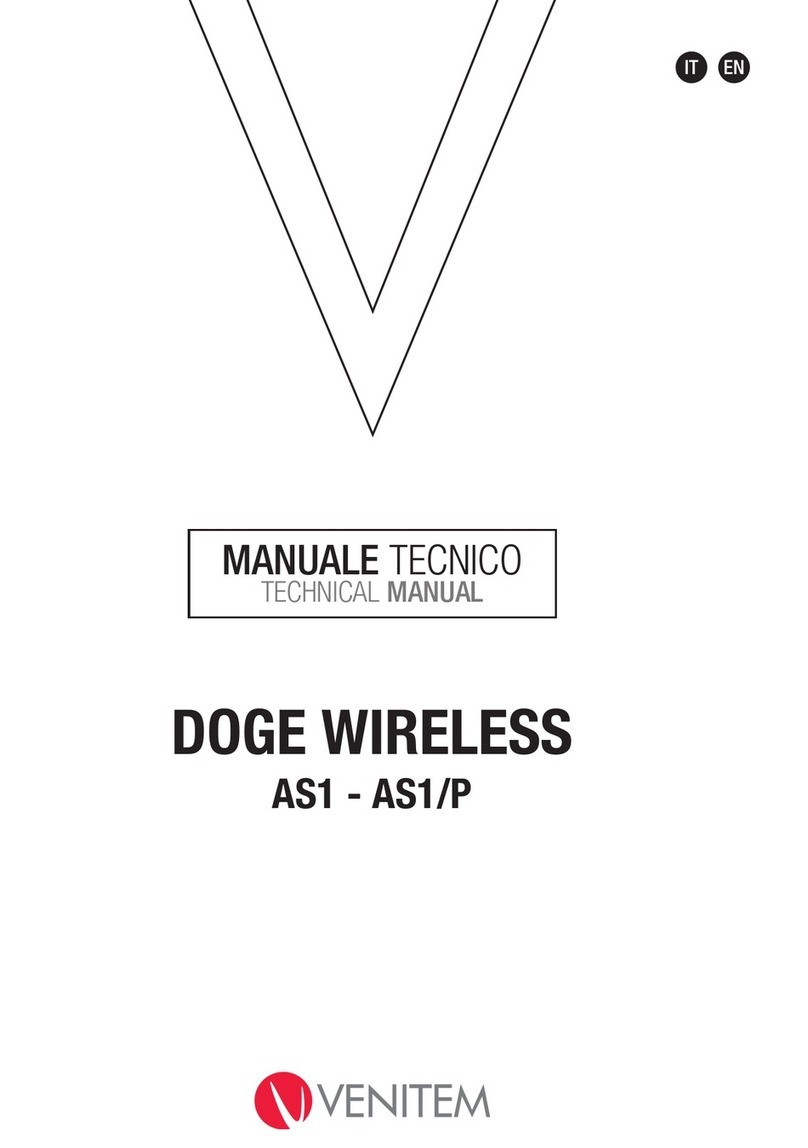MA-SE-RIO0-01-03 Manuale Rio eng rev3 Rev.3 Page 4 of 6
2. THREE-WIRE CONNECTION
Connect 13.8 Volt supplying coming from control panel to the dedicated terminals:
-RIC negative; +RIC positive. (+C trigger must be jumped to +RIC ); RES negative trigger for flash reset.
Note: by default, DIPSWITCH N°2 is set in OFF position, POSITIVE-MISSING TRIGGER
3. OPTICAL INDICATION OF SYSTEM STATUS (MOMENTARY OR PERMANENT ON-OFF)
If a positive is given to terminal STI (System status) all LEDs of the flashing light make 3 flashes (ON);
If the positive is removed, all LEDs light on steady for 5 seconds (OFF) and the complete sounder test is launched (remote test).
By default, DIPSWITCH N°4 is set in OFF position (MOMENTARY ON-OFF)
DIPSWITCH N°4 in ON position (MOMENTARY ON-OFF) and 1 LED keeping on flashing as long as positive tension = 0V is given to terminal STI.
4. SOUNDER TIMING
By default, timing is 3 minutes (DIPSWITCH N°1 in OFF position) and it can be modified into 8 minutes.
5. TERMINAL 5 - NEGATIVE SOUND-BLOCK INPUT
It gives a 0V signal to terminal 5 thus activating the sound interruption trigger.
6. TERMINAL OUT ANM AND FAULTS LED
The microcontroller managing the sounder is able to check if recharge, battery, loudspeaker and drivers are working properly. In case of faults, the
open collector output OUT ANM opens while the LED located on the sounder board shows the type of fault by making a certain number of flashes
followed by a short pause (please see chart here below for FAULTS LED signalisation).
The microcontroller automatically performs every 4 hours the battery current test. Moreover, other tests are performed on regular basis. Usually, if
the sounder is properly supplied, the faults output (terminal 7) remains at 0V (max consumption 50mA). In case any of the tests performed fails,
the faults output disconnects from the ground and becomes free. Moreover, the microprocessor is always under self-test and in case of failure or
malfunctioning, it gives a free output with sound interruption.
To reset the fault appeared: eliminate the fault cause. Then:
-(see scheme below): wait 10 seconds, let terminal n°4 (STI) free, take it to 12V, wait 10 seconds and let terminal n°4 free again. This procedure
resets all faults;
-all faults are anyway reset after every alarm (+C), with the exception of those concerning the battery that are reset after 4 hours from battery
restore (replacement). The sounder performs all tests again and therefore updates battery faults too.
At the first sounder supplying (13.8V or battery), anomalies automatically reset once the cause disappears; this makes the installation easier. After
the first activation of the sounder, anomalies reset through a command to STI terminal or through +C.
To launch the remote test, see scheme here above. This action launches the test that lasts 60 seconds. During the test, the sounder verifies if it is
working properly and provides signalization of any faults through the faults output (OUT ANM) and the faults LED as shown in CHART 1: FAULTS
below.
In case a fault occurs, the LEDs of the flashing light flash faster.


